AUCTORES
Globalize your Research
Research Article | DOI: https://doi.org/10.31579/2578-8965/248
Pelvic Rehabilitation Medicine Clinical Research Foundation, West Palm Beach, FL, USA
*Corresponding Author: Katherine Wolfrum, Pelvic Rehabilitation Medicine Clinical Research Foundation, West Palm Beach, FL, USA.
Citation: Allyson Shrikhande, Lolasri Rampally, Katherine Wolfrum, Jasmine Ross, Gautam Shrikhande, (2024), Significant Improvement Noted in Vulvodynia when Pelvic Neurogenic Inflammation is Addressed, J. Obstetrics Gynecology and Reproductive Sciences, 8(8) DOI:10.31579/2578-8965/248
Copyright: © 2024, Katherine Wolfrum. This is an open-access article distributed under the terms of The Creative Commons Attribution License, which permits unrestricted use, distribution, and reproduction in any medium, provided the original author and source are credited.
Received: 25 October 2024 | Accepted: 05 November 2024 | Published: 12 November 2024
Keywords: vulvodynia; pelvic pain; chronic pelvic pain; pelvic floor muscle dysfunction; levator ani myalgia; sexual intercourse; intercourse pain; female sexual dysfunction
Synopsis/Brief Summary
Vulvodynia is effectively treated by the PRM Protocol™, which improves pain, function, and quality of life in patients with chronic pelvic pain.
Objective: Vulvodynia, characterized by chronic pain and/or discomfort around the opening of the vulva, is known to affect up to 16% of adult women and may present as constant or intermittent pain that negatively impacts patients’ personal and working lives, as well as mental health and relationships. This study aimed to test the effectiveness of a multimodal neuromuscular treatment protocol in treating chronic pelvic pain and vulvodynia symptoms and improving pain and function.
Methods: 59 patients ages 20-79 presented to an outpatient clinic with pelvic pain and Vulvodynia symptoms. These symptoms had, on average, persisted for 6 years. All patients underwent a once-weekly, six-week treatment (the PRM Protocol) consisting of ultrasound-guided pelvic floor musculature trigger-point injections and peripheral nerve blocks. To measure the effects of this treatment, a 0-10 Visual Analogue Scale (VAS) was used to measure pelvic pain intensity, and the Functional Pelvic Pain Scale (FPPS) was used to measure function across multiple areas. These measures were taken on patients’ first visit to a clinic and three months after treatment began.
Results: VAS scores improved by an average of 51%. Before treatment, the mean VAS score was 7.93 (SD=1.61) (a=0.05; CI 7.52-8.34), and the posttreatment mean VAS score was 3.9 (SD=2.19) (a=0.05; CI 3.34-4.46) (P<0.0001). Pelvic pain functionality improved by 23% after three months. Pretreatment FPPS scores averaged at 12.34 (SD=5.8) (a=0.05; CI 10.86-13.82), decreasing to 9.53 (SD=5.43) (a=0.05; CI 8.14-10.91) after treatment (P<0.0001). FPPS functions that showed the most significant improvement were Sleep, which improved by 39%; Intercourse, which improved by 28%; and Walking, which improved by 28%.
Conclusions: These results indicate that a six-week treatment consisting of once-weekly ultrasound-guided pelvic floor musculature trigger-point injections and peripheral nerve blocks combined with once-weekly pelvic floor physical therapy was very effective at relieving pain and improving function for patients with Vulvodynia. Significant reductions in opiate use, ER visits, and pain interference at work were observed following treatment.
Vulvodynia is known to affect up to 16% of women [1]. It is described as vulvar pain at least 3 months in duration in nonsexual and/or sexual situations without a clearly identifiable cause1. It is a diagnosis of exclusion [1]. Vulvodynia is classified into two main subtypes by location of pain. Provoked vestibulodynia (PVD), which is the most common subtype, is provoked pain localized to the vaginal vestibule [2]. Generalized vulvodynia (GVD) is unprovoked, diffuse vulvar pain that affects the entire vulvar area [3]. Examination for vulvodynia often involves the cotton swab test (Q Tip Test), which is the standard test for PVD [4]. The cotton swab test involves palpation of several genital regions with a cotton swab tip and assessing the level of pain at each region [4].
The etiology of vulvodynia is unknown. There have been suggestions that vulvodynia stems from complex interactions of peripheral and central pain mechanisms, as well as psychological, behavioral, genetic, and musculoskeletal factors [4]. Further, chronic inflammation, genetic immune factors, and hormonal changes may also play a role in the development of vulvodynia [5].
Vulvodynia has a significant personal and societal burden due to its adverse widespread effects on women’s quality of life as well as their partners. Patients with PVD can avoid sex due to the length of lingering pain, which can last for hours to days after touch or sexual intercourse. Additionally, women may not be able to participate in routine exercise or activities such as wearing tight clothing or riding a bicycle due to the pain [5]. Furthermore, women with vulvodynia often seek many healthcare providers before receiving a diagnosis and treatment [1]. Due to this, women with vulvodynia may feel marginalized and frustrated by the healthcare system. Medical management of vulvodynia should be multidisciplinary.
Medical treatment for vulvodynia frequently involves cognitive behavioral therapy, pelvic floor physical therapy, and behavioral modifications such as guided imagery. Pharmacological interventions for vulvodynia can include botulinum type A, corticosteroids, local anesthetics such as lidocaine, and oral neuropathic pain agents [3].
Since there is limited research concerning the efficacy of vulvodynia treatment, this study tested the efficacy of an outpatient, comprehensive, neuromuscular treatment protocol aimed at treating the myofascial pain and dysfunction, peripheral sensitization, and central sensitization seen in female vulvodynia patients.
87 patients aged 18 – 79 (Figure 1) who had been previously diagnosed with Vulvodynia were included in this study. These patients presented to an outpatient pelvic rehabilitation practice between April 2021 and December 2022. For these patients, Vulvodynia symptoms persisted for an average of 6 years. Patient demographics and clinical characteristics are depicted in Figures 1, 2, 3, 4, and 5.
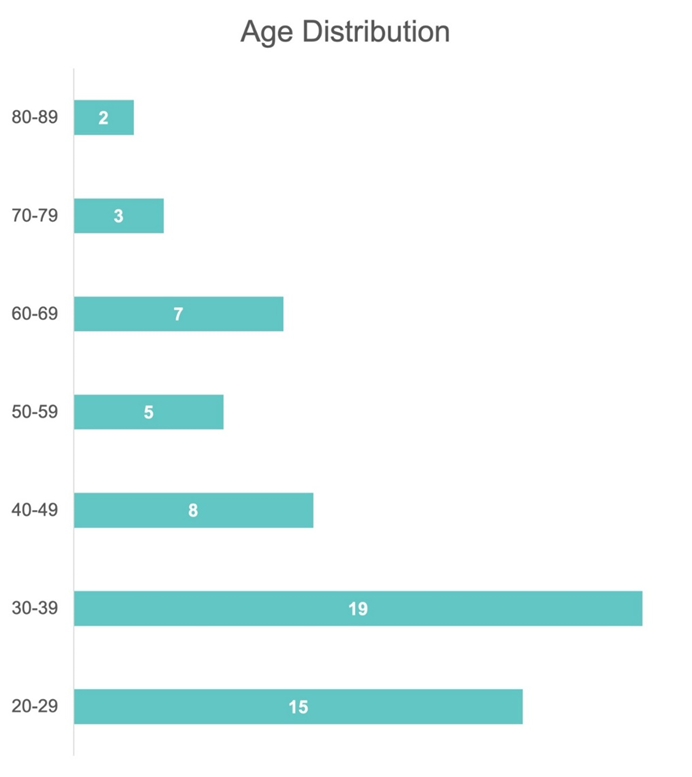
Figure 1: Age Distribution of Patients
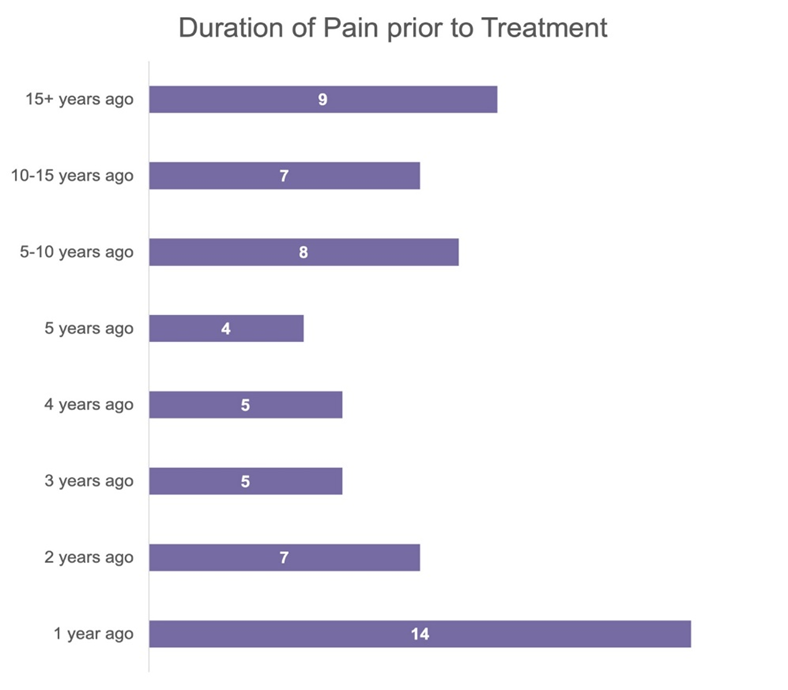
Figure 2: Patient duration of pain before the PRM Protocol™ treatment
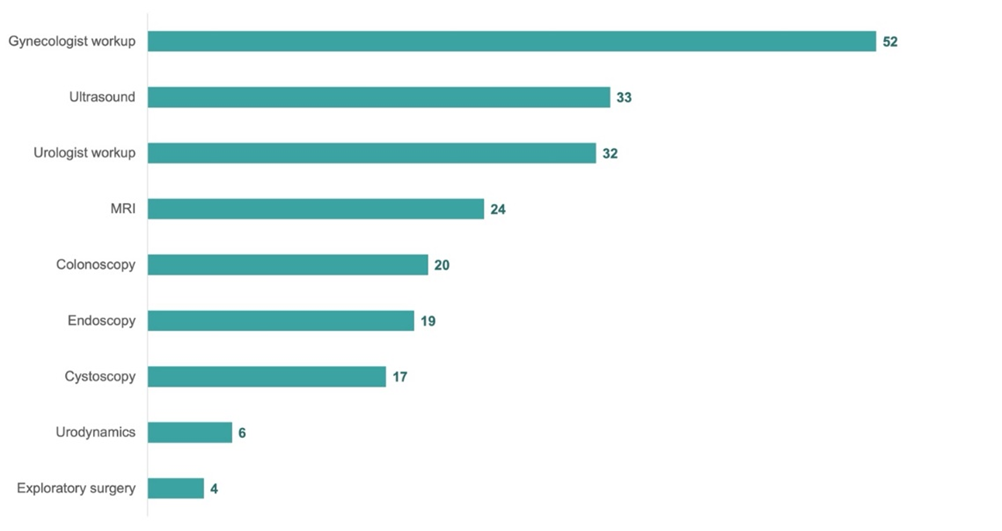
Figure 3: Patient clinical treatments and examinations before the PRM Protocol™ treatment
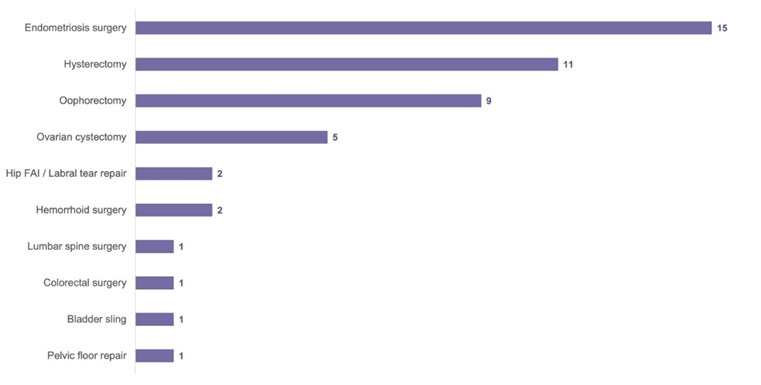
Figure 4: Patient surgical procedures before the PRM Protocol™ treatment
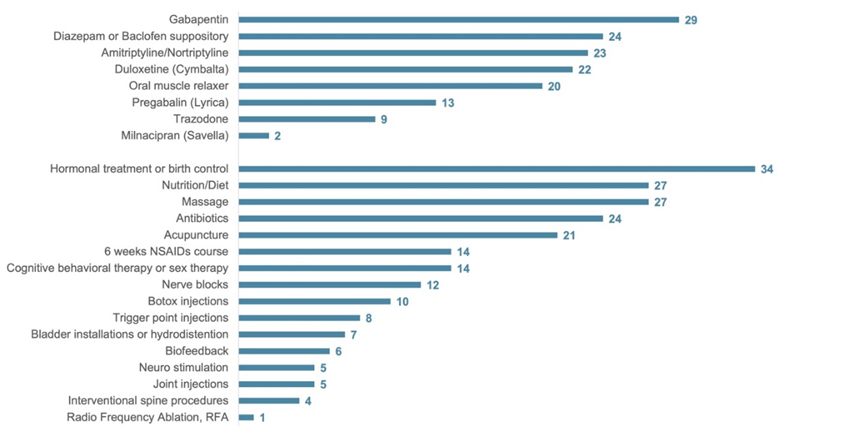
Figure 5: Population frequency use of medications and treatments before the PRM Protocol™ treatment
Patients were eligible for this retrospective chart review if they met the following inclusion criteria:
- Completion of a Full Gynecological examination with necessary workup
to exclude other causes of vulvar pain, including lichen sclerosis and infection
- Completion of 6 weeks of pelvic floor physical therapy
- Completion of an external ultrasound guided by office-based pelvic peripheral nerve block and trigger point injection series protocol, or the non-completion of this protocol.
- Completion of an internal examination with a positive cotton swab Test (Q Tip Test)
- Trigger points, pelvic floor hypertonia, and tenderness upon palpitation of levator ani sling on internal examination
- Tenderness along the pudendal nerve and posterior femoral cutaneous nerve at Alcock's canal and obturator canal bilaterally internally
Patients were excluded from the retrospective chart review if any of the following were present:
- Active infection
- Malignancy
- Pregnancy
- Pudendal nerve entrapment syndrome
- Incomplete Patient Reported Outcome measures
The protocol for this research project was approved by a suitably constituted Ethics Committee of the institution, and it conforms to the provisions of the Declaration of Helsinki. Committee of The Feinstein Institutes for Medical Research, Approval No. IRB# 17-0761. Our study does not have a clinical trial number, and consent forms were waived due to study design.
This IRB-approved (IRB# 17‐0761) treatment was designed for patients whose symptoms persisted after participating in pelvic floor physical
therapy. Prior to each procedure, patients were pre-medicated with diclofenac 75 mg PO and a topical anesthetic spray.
Patients underwent unilateral, once-weekly ultrasound‐guided pelvic peripheral nerve blocks. In the prone position, a pudendal nerve block at Alcock's canal was performed using 2 ml of dexamethasone with 7 ml of 1% Lidocaine on the initial visit, and normal saline was used instead of the dexamethasone for subsequent nerve blocks. Patients simultaneously underwent external ultrasound‐guided trigger point injections using Lidocaine 1% to the pelvic musculature. A global injection was administered into the iliococcygeus, pubococcygeus, or puborectalis one side at a time, treating every muscle of the levator ani sling once throughout the six weeks of treatment. A flexible, 6‐inch, 27‐gauge needle injected the specific muscle from the subgluteal posterior approach, using an aseptic technique under ultrasound guidance with the patient lying in the prone position. On ultrasound, myofascial trigger points look like focal, hypoechoic zones with lowered vibration amplitude on vibration sonoelastography, suggesting a local, rigid nodule [19].
Then, in the supine position, a nerve block of the posterior femoral cutaneous nerve 4 cm inferior to the ischial tuberosity was performed with 2 ml of dexamethasone and 5 ml of 1% Lidocaine on the initial visit. The dexamethasone was substituted with normal saline in subsequent visits.
Patients resumed normal activities and returned to work the same day after sitting on ice for 10 minutes.
Participant response to treatment was measured 6 weeks after their final injection appointment. The primary outcome measures are a visual analog scale (VAS) score to calculate pelvic pain concentration and functional pelvic pain scale (FPPS) scores to measure pelvic functionality. Patients reported their mean pain intensity from 1-10 during the previous 24 hours for the VAS score. The total FPPS score adds subs-cores from each of the following categories: working, intercourse, sleeping, walking, running, lifting, bladder, and bowel. Each category is scored 0-4, where 0 represents average performance and 4 denotes significant debilitation, resulting in a total FPPS score from 0-32.
Secondary outcome measures include a modified NIH Sexual Function Profile (SFP), which consists of three questions concerning sexual well-being totaled for an overall Modified SFP score. Absenteeism and Presenteeism questionnaires, as well as the patient-reported frequency of opioid use and Emergency Room (ER visits), are utilized for a more well-rounded account of a patient’s well-being.
A retrospective medical records review was conducted to analyze the above outcome measures. VAS, FPPS, and SFP scores were analyzed using a Wilcoxon signed-rank test for paired samples due to their non-normal distribution. Differences in Absenteeism and Presenteeism were tested using a Chi-squared test, and changes in opioid use and ER Visits were tested using a McNemar test for paired proportions. Statistical analyses were performed in SPSSv.29, using a cutoff of α = 0.05.
Statistically significant results were achieved across several outcome variables. A 1-10 VAS (Visual Analog Scale), FPPS (Functional Pelvic Pain Scale), a modified SFP (Sexual Function Profile), Opioid use, Emergency Room visits, Absenteeism, and Presenteeism were measured at participants’ initial appointment (Before Treatment) and their appointment held 3 months after their first injection (After Treatment). Results for the statistical tests outlined above can be seen in Figures 6, 7, 8, 9, and 10.
VAS pain levels decreased by 50% from a Before Treatment average of 7.96 (SD 1.61; α = 0.05, CI = 7.59-8.33) to an After Treatment average of 3.99 (SD 2.3; α = 0.05, CI = 3.46-4.52) (p< .001) (Figure 6). FPPS total scores decreased by 26% from an average of 11.49 (SD 6.38; α = 0.05, CI = 10.03-12.96) to an average of 8.55 (SD 5.50; α = 0.05, CI = 7.29-9.81) (p< .001) (Figure 6). Improvements in all FPPS categories were statistically significant (p < .001), with the largest decreases in Sleep (38% improvement), Intercourse (35% improvement), and Walking (28% improvement) (Figure 7).
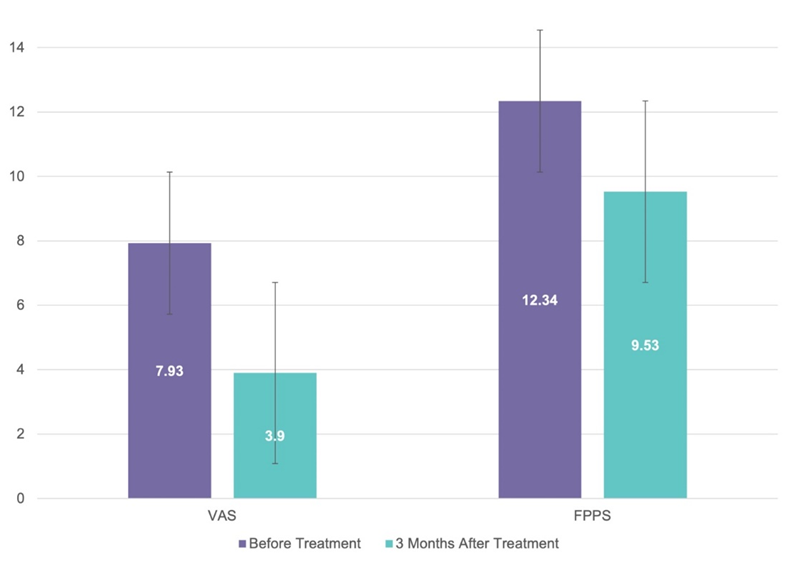
Figure 6: VAS and FPPS scores were measured at participants’ initial appointment (Before Treatment), and their appointment was held 3 months after their first injection (After Treatment).
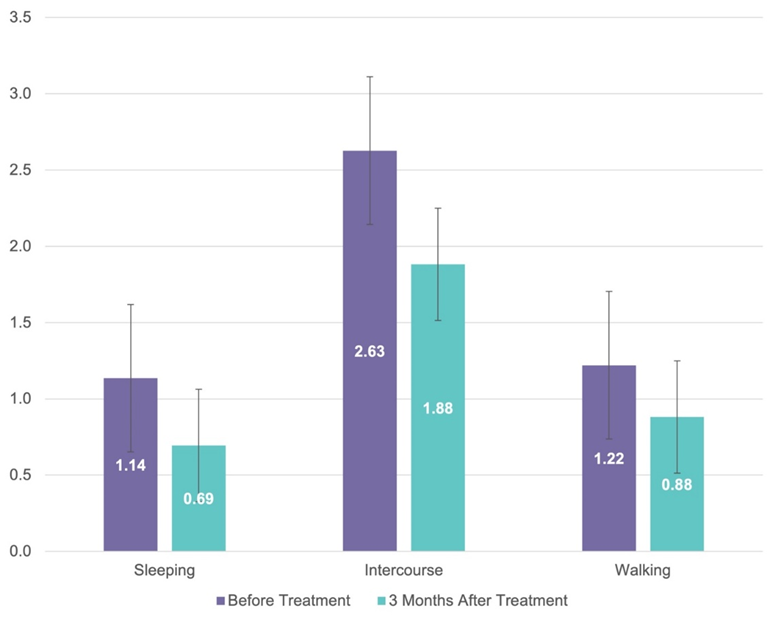
Figure 7: FPPS scores in the categories of Sleeping, Intercourse, and Walking were measured at participants’ initial appointment (Before Treatment) and their appointment held 3 months after their first injection (After Treatment).
Our modified SFP asked the following three questions: “In the past 30 days, how would you describe the comfort of your vagina during sexual activity?” “In the past 30 days, how often have you had difficulty with sexual activity
because of discomfort/ pain in your vagina?” and “In the past 30 days, how often have you stopped sexual activity because of discomfort/ pain in your vagina?” Responses were scored 0-5 and summed for an average improvement of 23% (P=0.0406) (Figure 7,8).
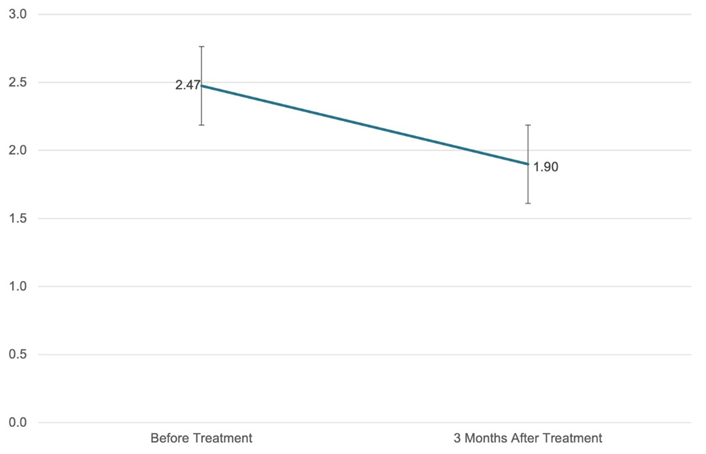
Figure 8: Modified Sexual Function Profile (SFP) measured at participants’ initial appointment (Before Treatment) and their appointment held 3 months after their first injection (After Treatment).
Opioid use for pelvic pain decreased by 64% for patients (Figure 9). Before Treatment, 8% of patients reported having gone to the Emergency Room for pelvic pain recently (Figure 9). 0 patients had gone to the Emergency Room 3 months After Treatment (Figure 9).
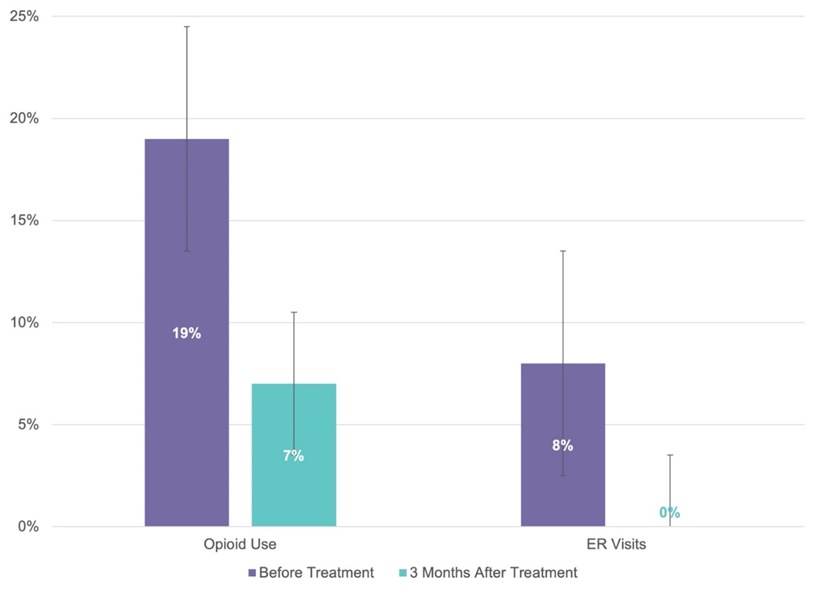
Figure 8: Opioid Use and ER Visits were measured at participants’ initial appointment (Before Treatment), and their appointments were held 3 months after their first injection (After Treatment).
Absenteeism, defined by at least one day of work missed in the past 3 months due to pelvic pain, decreased by 53% (Figure 10). Presenteeism, represented by at least 1 hour of work productivity being disturbed by pelvic pain in the past 3 months, reduced by 67% (Figure 11).
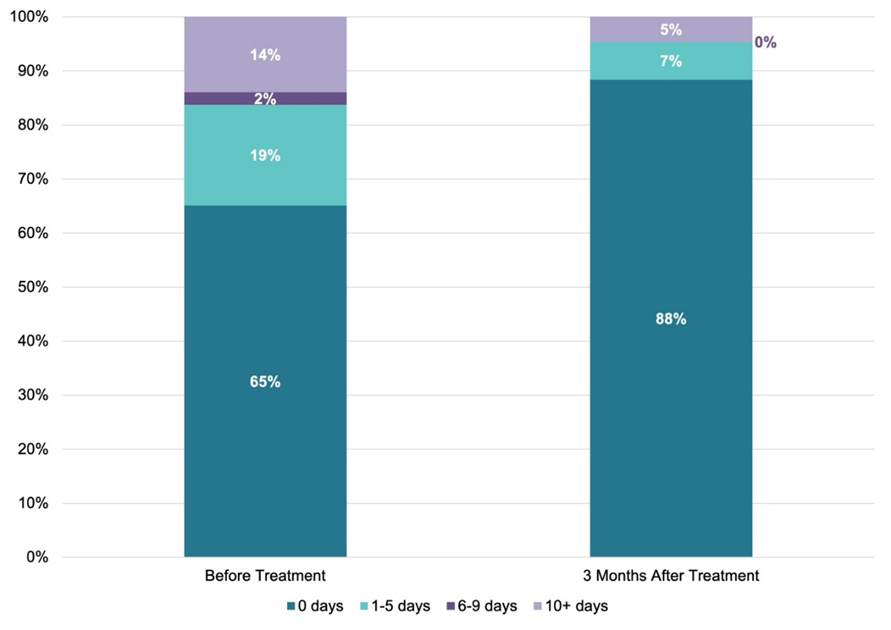
Figure 9: Absenteeism was measured at participants’ initial appointment (Before Treatment), and their appointment was held 3 months after their first injection (After Treatment).
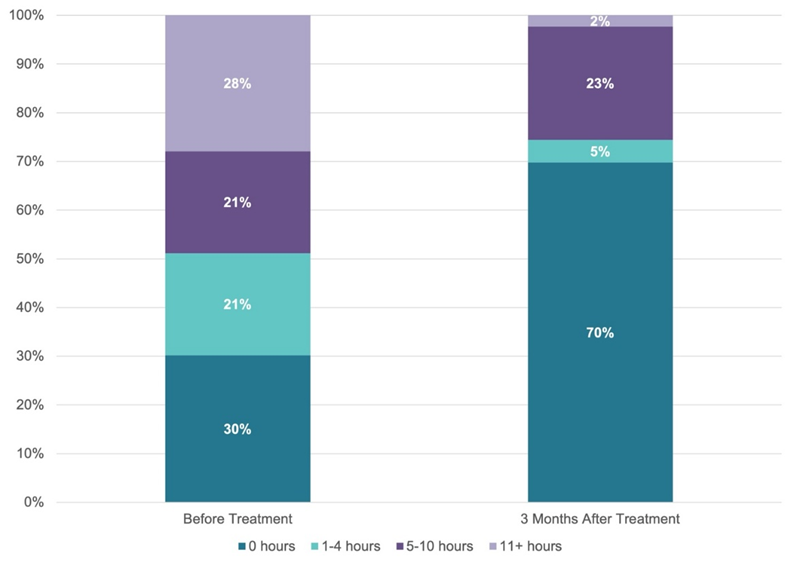
Figure 10: Presenteeism was measured at participants’ initial appointment (Before Treatment), and their appointment was held 3 months after their first injection (After Treatment).
This paper studied the effect of a multimodal protocol involving office-based ultrasound‐guided pelvic peripheral nerve blocks of the pudendal nerve and the posterior femoral cutaneous nerve, trigger point injections to the pelvic floor musculature, and pelvic floor physical therapy to treat Vulvodynia in the setting of CPP and a hypertonic pelvic floor. The paper aimed to capture the effect of this protocol on a wide variety of outcome parameters, including pain, function, work productivity, quality of life, mental health, sexual health, and healthcare system utilization. The average duration of pain for the 87 participants in this study was 6 years. 81% of participants had tried specialized treatments for vulvodynia in the past (in addition to the 6 weeks of pelvic floor physical therapy necessary for inclusion in the study), and 15% of participants had undergone surgery or procedures for vulvodynia-related pain. Productivity measured by Absenteeism and Presenteeism variables is inversely correlated with pain as measured by VAS, demonstrating that vulvodynia-related pain significantly impacts patients’ careers. As evidenced by the Before Treatment values across all outcome measures, vulvodynia patients experience hardship due to pain in every area of life.
The outpatient protocol examined in this study simultaneously targets the underlying pain and dysfunction in both the myofascial and nervous systems seen in vulvodynia patients with the goal of rehabilitation. Statistically significant improvements in VAS pain levels and FPPS function were found for participants, demonstrating the effectiveness of addressing underlying nerve and muscle dysfunction and applying the concept of neuroplasticity to vulvodynia [4,6]. Myofascial dysfunction seen in the pelvis is related to bowel, bladder, and sexual dysfunction, and it creates pelvic pain from myofascial trigger points. Treating this underlying myofascial pain and pelvic floor dysfunction with ultrasound‐guided trigger point injections to each muscle of the levator ani sling will remove the source of ongoing nociception as well as create space for the pelvic peripheral nerves to flow with less constriction and increased blood flow [8]. Peripheral sensitization is addressed using serial peripheral nerve blocks along the pudendal and posterior femoral cutaneous nerves; protocol (1) decreases neurogenic inflammation by placing dexamethasone locally to deplete substance P9 and with repetitive exposure to lidocaine 1%, which decreases the mast cell release of histamine and (2) desensitizes hyperactive peripheral nociceptors with repetitive exposure to lidocaine 1% [10]. Central sensitization is addressed by treating associated pelvic neurogenic inflammation, thus inhibiting the feedback loop from the peripheral nervous system to the central nervous system [11]. The overlap in pain patterns and innervation between the pudendal and posterior femoral cutaneous nerves leads to cross‐sensitization. This phenomenon is known to occur in the pelvis, where a sensitized structure can upregulate an adjacent, normal structure [12]. Consequently, the protocol treats both peripheral pelvic nerves simultaneously to inhibit cross‐sensitization.
The most significant improvements were seen with intercourse, sleeping, and bladder symptoms. As our protocol directly treats the pelvic nerve inflammation and pelvic muscles involved with intercourse and vulvodynia, reversing the pelvic neurogenic inflammation and hypertonic pelvic floor results in less vulvar pain and improved function with intercourse. There is evidence that vulvodynia and bladder pain syndrome/interstitial cystitis often overlap [13]. The proposed connection between vulvodynia and BPS/IC suggests that pain hypersensitivity is mediated by peripheral and central sensitization [18]. Therefore, it makes sense that bladder symptoms would improve along with the vulvodynia symptoms as our protocol addresses the associated peripheral and central sensitization [20]. Through pelvic organ cross-sensitization and bladder neuroplasticity, there is the possibility that pudendal nerve irritation can induce increased activity of bladder C-fiber afferent pathways, which is reportedly involved in the development of OAB [14]. Therefore, reversing the peripheral neurogenic inflammation around the pudendal nerve and simultaneously releasing a hypertonic pelvic floor will ultimately decrease bladder symptoms in CPP patients. Lastly, our protocol has proven to help patients with vulvodynia in the setting of CPP and a hypertonic pelvic floor achieve sleep, most likely due to a combination of decreasing their pelvic pain as well as decreasing nocturia as their bladder symptoms resolve [15]. Improvements were minimal in both walking and running for our male patients, secondary to the fact that their initial VAS and FPPS scores were also very low before treatment, leaving little room for improvement. Once pelvic pain symptoms are improved, they can regain their quality of life.
Vulvodynia patients are often underdiagnosed and undertreated as there is a lack of awareness, understanding, simple diagnostics, and treatment options in the medical community [1,4,16]. Therefore, they find themselves being bounced around the medical ecosystem, going to the Emergency Room when the pain is severe [17], undergoing many unnecessary diagnostic procedures, as well as many unsuccessful therapeutic surgical and non-surgical treatments. As a medical community, it would be best for the patient and the healthcare system to create a streamlined diagnostic and treatment protocol for vulvodynia.
Concerning their vulvodynia-related pain, patients were asked to report the number of days of work they had missed in the past 3 months (Absenteeism) and the number of hours of work productivity negatively affected in the past 3 months (Presenteeism). After the outpatient protocol, the number of participants who had missed any number of hours or days due to vulvodynia was reduced by two-thirds. These drastic improvements in both outcome measures add to the evidence that vulvodynia significantly impairs patients' careers and demonstrate the outpatient protocol's positive effect on patients’ working lives.
The study has a few notable limitations, the first of which is that the retrospective nature does not allow for randomized control groups. We cannot assess the effectiveness of our protocol against placebo control groups as we would intentionally not be treating control group vulvodynia patients who are seeking relief from their pain. However, our results are statistically significant across five validated measures for pain, function, and quality of life, showing that patients saw significant improvement in pain, function, and quality of life.
To conclude, our study reported statistically significant results for our comprehensive, outpatient neuromuscular protocol in patients aged 17–78 who had been diagnosed with vulvodynia. The most significant improvements were seen in overall pain level, intercourse, sleeping, bladder function, social participation, and anxiety. Significant decreases in opioid use, ER visits, and pain interference at work were also found after the treatment.
The authors report no conflicts of interest in this work.
All authors contributed to the design and implementation of the research, the analysis of the results, and the writing of the manuscript. All authors provide permission to submit this paper and agree they have had the opportunity to review its contents.
The study was performed at Pelvic Rehabilitation Medicine in Atlanta, Chicago, Dallas, Houston, Miami, New York City, New Jersey, Michigan, and Washington, D.C. Patient data were gathered from these clinics.
This research received no external funding.
Clearly Auctoresonline and particularly Psychology and Mental Health Care Journal is dedicated to improving health care services for individuals and populations. The editorial boards' ability to efficiently recognize and share the global importance of health literacy with a variety of stakeholders. Auctoresonline publishing platform can be used to facilitate of optimal client-based services and should be added to health care professionals' repertoire of evidence-based health care resources.

Journal of Clinical Cardiology and Cardiovascular Intervention The submission and review process was adequate. However I think that the publication total value should have been enlightened in early fases. Thank you for all.

Journal of Women Health Care and Issues By the present mail, I want to say thank to you and tour colleagues for facilitating my published article. Specially thank you for the peer review process, support from the editorial office. I appreciate positively the quality of your journal.
Journal of Clinical Research and Reports I would be very delighted to submit my testimonial regarding the reviewer board and the editorial office. The reviewer board were accurate and helpful regarding any modifications for my manuscript. And the editorial office were very helpful and supportive in contacting and monitoring with any update and offering help. It was my pleasure to contribute with your promising Journal and I am looking forward for more collaboration.

We would like to thank the Journal of Thoracic Disease and Cardiothoracic Surgery because of the services they provided us for our articles. The peer-review process was done in a very excellent time manner, and the opinions of the reviewers helped us to improve our manuscript further. The editorial office had an outstanding correspondence with us and guided us in many ways. During a hard time of the pandemic that is affecting every one of us tremendously, the editorial office helped us make everything easier for publishing scientific work. Hope for a more scientific relationship with your Journal.

The peer-review process which consisted high quality queries on the paper. I did answer six reviewers’ questions and comments before the paper was accepted. The support from the editorial office is excellent.

Journal of Neuroscience and Neurological Surgery. I had the experience of publishing a research article recently. The whole process was simple from submission to publication. The reviewers made specific and valuable recommendations and corrections that improved the quality of my publication. I strongly recommend this Journal.

Dr. Katarzyna Byczkowska My testimonial covering: "The peer review process is quick and effective. The support from the editorial office is very professional and friendly. Quality of the Clinical Cardiology and Cardiovascular Interventions is scientific and publishes ground-breaking research on cardiology that is useful for other professionals in the field.

Thank you most sincerely, with regard to the support you have given in relation to the reviewing process and the processing of my article entitled "Large Cell Neuroendocrine Carcinoma of The Prostate Gland: A Review and Update" for publication in your esteemed Journal, Journal of Cancer Research and Cellular Therapeutics". The editorial team has been very supportive.

Testimony of Journal of Clinical Otorhinolaryngology: work with your Reviews has been a educational and constructive experience. The editorial office were very helpful and supportive. It was a pleasure to contribute to your Journal.

Dr. Bernard Terkimbi Utoo, I am happy to publish my scientific work in Journal of Women Health Care and Issues (JWHCI). The manuscript submission was seamless and peer review process was top notch. I was amazed that 4 reviewers worked on the manuscript which made it a highly technical, standard and excellent quality paper. I appreciate the format and consideration for the APC as well as the speed of publication. It is my pleasure to continue with this scientific relationship with the esteem JWHCI.

This is an acknowledgment for peer reviewers, editorial board of Journal of Clinical Research and Reports. They show a lot of consideration for us as publishers for our research article “Evaluation of the different factors associated with side effects of COVID-19 vaccination on medical students, Mutah university, Al-Karak, Jordan”, in a very professional and easy way. This journal is one of outstanding medical journal.
Dear Hao Jiang, to Journal of Nutrition and Food Processing We greatly appreciate the efficient, professional and rapid processing of our paper by your team. If there is anything else we should do, please do not hesitate to let us know. On behalf of my co-authors, we would like to express our great appreciation to editor and reviewers.

As an author who has recently published in the journal "Brain and Neurological Disorders". I am delighted to provide a testimonial on the peer review process, editorial office support, and the overall quality of the journal. The peer review process at Brain and Neurological Disorders is rigorous and meticulous, ensuring that only high-quality, evidence-based research is published. The reviewers are experts in their fields, and their comments and suggestions were constructive and helped improve the quality of my manuscript. The review process was timely and efficient, with clear communication from the editorial office at each stage. The support from the editorial office was exceptional throughout the entire process. The editorial staff was responsive, professional, and always willing to help. They provided valuable guidance on formatting, structure, and ethical considerations, making the submission process seamless. Moreover, they kept me informed about the status of my manuscript and provided timely updates, which made the process less stressful. The journal Brain and Neurological Disorders is of the highest quality, with a strong focus on publishing cutting-edge research in the field of neurology. The articles published in this journal are well-researched, rigorously peer-reviewed, and written by experts in the field. The journal maintains high standards, ensuring that readers are provided with the most up-to-date and reliable information on brain and neurological disorders. In conclusion, I had a wonderful experience publishing in Brain and Neurological Disorders. The peer review process was thorough, the editorial office provided exceptional support, and the journal's quality is second to none. I would highly recommend this journal to any researcher working in the field of neurology and brain disorders.

Dear Agrippa Hilda, Journal of Neuroscience and Neurological Surgery, Editorial Coordinator, I trust this message finds you well. I want to extend my appreciation for considering my article for publication in your esteemed journal. I am pleased to provide a testimonial regarding the peer review process and the support received from your editorial office. The peer review process for my paper was carried out in a highly professional and thorough manner. The feedback and comments provided by the authors were constructive and very useful in improving the quality of the manuscript. This rigorous assessment process undoubtedly contributes to the high standards maintained by your journal.

International Journal of Clinical Case Reports and Reviews. I strongly recommend to consider submitting your work to this high-quality journal. The support and availability of the Editorial staff is outstanding and the review process was both efficient and rigorous.

Thank you very much for publishing my Research Article titled “Comparing Treatment Outcome Of Allergic Rhinitis Patients After Using Fluticasone Nasal Spray And Nasal Douching" in the Journal of Clinical Otorhinolaryngology. As Medical Professionals we are immensely benefited from study of various informative Articles and Papers published in this high quality Journal. I look forward to enriching my knowledge by regular study of the Journal and contribute my future work in the field of ENT through the Journal for use by the medical fraternity. The support from the Editorial office was excellent and very prompt. I also welcome the comments received from the readers of my Research Article.

Dear Erica Kelsey, Editorial Coordinator of Cancer Research and Cellular Therapeutics Our team is very satisfied with the processing of our paper by your journal. That was fast, efficient, rigorous, but without unnecessary complications. We appreciated the very short time between the submission of the paper and its publication on line on your site.

I am very glad to say that the peer review process is very successful and fast and support from the Editorial Office. Therefore, I would like to continue our scientific relationship for a long time. And I especially thank you for your kindly attention towards my article. Have a good day!

"We recently published an article entitled “Influence of beta-Cyclodextrins upon the Degradation of Carbofuran Derivatives under Alkaline Conditions" in the Journal of “Pesticides and Biofertilizers” to show that the cyclodextrins protect the carbamates increasing their half-life time in the presence of basic conditions This will be very helpful to understand carbofuran behaviour in the analytical, agro-environmental and food areas. We greatly appreciated the interaction with the editor and the editorial team; we were particularly well accompanied during the course of the revision process, since all various steps towards publication were short and without delay".

I would like to express my gratitude towards you process of article review and submission. I found this to be very fair and expedient. Your follow up has been excellent. I have many publications in national and international journal and your process has been one of the best so far. Keep up the great work.

We are grateful for this opportunity to provide a glowing recommendation to the Journal of Psychiatry and Psychotherapy. We found that the editorial team were very supportive, helpful, kept us abreast of timelines and over all very professional in nature. The peer review process was rigorous, efficient and constructive that really enhanced our article submission. The experience with this journal remains one of our best ever and we look forward to providing future submissions in the near future.

I am very pleased to serve as EBM of the journal, I hope many years of my experience in stem cells can help the journal from one way or another. As we know, stem cells hold great potential for regenerative medicine, which are mostly used to promote the repair response of diseased, dysfunctional or injured tissue using stem cells or their derivatives. I think Stem Cell Research and Therapeutics International is a great platform to publish and share the understanding towards the biology and translational or clinical application of stem cells.

I would like to give my testimony in the support I have got by the peer review process and to support the editorial office where they were of asset to support young author like me to be encouraged to publish their work in your respected journal and globalize and share knowledge across the globe. I really give my great gratitude to your journal and the peer review including the editorial office.

I am delighted to publish our manuscript entitled "A Perspective on Cocaine Induced Stroke - Its Mechanisms and Management" in the Journal of Neuroscience and Neurological Surgery. The peer review process, support from the editorial office, and quality of the journal are excellent. The manuscripts published are of high quality and of excellent scientific value. I recommend this journal very much to colleagues.

Dr.Tania Muñoz, My experience as researcher and author of a review article in The Journal Clinical Cardiology and Interventions has been very enriching and stimulating. The editorial team is excellent, performs its work with absolute responsibility and delivery. They are proactive, dynamic and receptive to all proposals. Supporting at all times the vast universe of authors who choose them as an option for publication. The team of review specialists, members of the editorial board, are brilliant professionals, with remarkable performance in medical research and scientific methodology. Together they form a frontline team that consolidates the JCCI as a magnificent option for the publication and review of high-level medical articles and broad collective interest. I am honored to be able to share my review article and open to receive all your comments.

“The peer review process of JPMHC is quick and effective. Authors are benefited by good and professional reviewers with huge experience in the field of psychology and mental health. The support from the editorial office is very professional. People to contact to are friendly and happy to help and assist any query authors might have. Quality of the Journal is scientific and publishes ground-breaking research on mental health that is useful for other professionals in the field”.

Dear editorial department: On behalf of our team, I hereby certify the reliability and superiority of the International Journal of Clinical Case Reports and Reviews in the peer review process, editorial support, and journal quality. Firstly, the peer review process of the International Journal of Clinical Case Reports and Reviews is rigorous, fair, transparent, fast, and of high quality. The editorial department invites experts from relevant fields as anonymous reviewers to review all submitted manuscripts. These experts have rich academic backgrounds and experience, and can accurately evaluate the academic quality, originality, and suitability of manuscripts. The editorial department is committed to ensuring the rigor of the peer review process, while also making every effort to ensure a fast review cycle to meet the needs of authors and the academic community. Secondly, the editorial team of the International Journal of Clinical Case Reports and Reviews is composed of a group of senior scholars and professionals with rich experience and professional knowledge in related fields. The editorial department is committed to assisting authors in improving their manuscripts, ensuring their academic accuracy, clarity, and completeness. Editors actively collaborate with authors, providing useful suggestions and feedback to promote the improvement and development of the manuscript. We believe that the support of the editorial department is one of the key factors in ensuring the quality of the journal. Finally, the International Journal of Clinical Case Reports and Reviews is renowned for its high- quality articles and strict academic standards. The editorial department is committed to publishing innovative and academically valuable research results to promote the development and progress of related fields. The International Journal of Clinical Case Reports and Reviews is reasonably priced and ensures excellent service and quality ratio, allowing authors to obtain high-level academic publishing opportunities in an affordable manner. I hereby solemnly declare that the International Journal of Clinical Case Reports and Reviews has a high level of credibility and superiority in terms of peer review process, editorial support, reasonable fees, and journal quality. Sincerely, Rui Tao.

Clinical Cardiology and Cardiovascular Interventions I testity the covering of the peer review process, support from the editorial office, and quality of the journal.

Clinical Cardiology and Cardiovascular Interventions, we deeply appreciate the interest shown in our work and its publication. It has been a true pleasure to collaborate with you. The peer review process, as well as the support provided by the editorial office, have been exceptional, and the quality of the journal is very high, which was a determining factor in our decision to publish with you.
The peer reviewers process is quick and effective, the supports from editorial office is excellent, the quality of journal is high. I would like to collabroate with Internatioanl journal of Clinical Case Reports and Reviews journal clinically in the future time.

Clinical Cardiology and Cardiovascular Interventions, I would like to express my sincerest gratitude for the trust placed in our team for the publication in your journal. It has been a true pleasure to collaborate with you on this project. I am pleased to inform you that both the peer review process and the attention from the editorial coordination have been excellent. Your team has worked with dedication and professionalism to ensure that your publication meets the highest standards of quality. We are confident that this collaboration will result in mutual success, and we are eager to see the fruits of this shared effort.

Dear Dr. Jessica Magne, Editorial Coordinator 0f Clinical Cardiology and Cardiovascular Interventions, I hope this message finds you well. I want to express my utmost gratitude for your excellent work and for the dedication and speed in the publication process of my article titled "Navigating Innovation: Qualitative Insights on Using Technology for Health Education in Acute Coronary Syndrome Patients." I am very satisfied with the peer review process, the support from the editorial office, and the quality of the journal. I hope we can maintain our scientific relationship in the long term.
Dear Monica Gissare, - Editorial Coordinator of Nutrition and Food Processing. ¨My testimony with you is truly professional, with a positive response regarding the follow-up of the article and its review, you took into account my qualities and the importance of the topic¨.

Dear Dr. Jessica Magne, Editorial Coordinator 0f Clinical Cardiology and Cardiovascular Interventions, The review process for the article “The Handling of Anti-aggregants and Anticoagulants in the Oncologic Heart Patient Submitted to Surgery” was extremely rigorous and detailed. From the initial submission to the final acceptance, the editorial team at the “Journal of Clinical Cardiology and Cardiovascular Interventions” demonstrated a high level of professionalism and dedication. The reviewers provided constructive and detailed feedback, which was essential for improving the quality of our work. Communication was always clear and efficient, ensuring that all our questions were promptly addressed. The quality of the “Journal of Clinical Cardiology and Cardiovascular Interventions” is undeniable. It is a peer-reviewed, open-access publication dedicated exclusively to disseminating high-quality research in the field of clinical cardiology and cardiovascular interventions. The journal's impact factor is currently under evaluation, and it is indexed in reputable databases, which further reinforces its credibility and relevance in the scientific field. I highly recommend this journal to researchers looking for a reputable platform to publish their studies.

Dear Editorial Coordinator of the Journal of Nutrition and Food Processing! "I would like to thank the Journal of Nutrition and Food Processing for including and publishing my article. The peer review process was very quick, movement and precise. The Editorial Board has done an extremely conscientious job with much help, valuable comments and advices. I find the journal very valuable from a professional point of view, thank you very much for allowing me to be part of it and I would like to participate in the future!”

Dealing with The Journal of Neurology and Neurological Surgery was very smooth and comprehensive. The office staff took time to address my needs and the response from editors and the office was prompt and fair. I certainly hope to publish with this journal again.Their professionalism is apparent and more than satisfactory. Susan Weiner

My Testimonial Covering as fellowing: Lin-Show Chin. The peer reviewers process is quick and effective, the supports from editorial office is excellent, the quality of journal is high. I would like to collabroate with Internatioanl journal of Clinical Case Reports and Reviews.

My experience publishing in Psychology and Mental Health Care was exceptional. The peer review process was rigorous and constructive, with reviewers providing valuable insights that helped enhance the quality of our work. The editorial team was highly supportive and responsive, making the submission process smooth and efficient. The journal's commitment to high standards and academic rigor makes it a respected platform for quality research. I am grateful for the opportunity to publish in such a reputable journal.
My experience publishing in International Journal of Clinical Case Reports and Reviews was exceptional. I Come forth to Provide a Testimonial Covering the Peer Review Process and the editorial office for the Professional and Impartial Evaluation of the Manuscript.

I would like to offer my testimony in the support. I have received through the peer review process and support the editorial office where they are to support young authors like me, encourage them to publish their work in your esteemed journals, and globalize and share knowledge globally. I really appreciate your journal, peer review, and editorial office.
Dear Agrippa Hilda- Editorial Coordinator of Journal of Neuroscience and Neurological Surgery, "The peer review process was very quick and of high quality, which can also be seen in the articles in the journal. The collaboration with the editorial office was very good."

I would like to express my sincere gratitude for the support and efficiency provided by the editorial office throughout the publication process of my article, “Delayed Vulvar Metastases from Rectal Carcinoma: A Case Report.” I greatly appreciate the assistance and guidance I received from your team, which made the entire process smooth and efficient. The peer review process was thorough and constructive, contributing to the overall quality of the final article. I am very grateful for the high level of professionalism and commitment shown by the editorial staff, and I look forward to maintaining a long-term collaboration with the International Journal of Clinical Case Reports and Reviews.
To Dear Erin Aust, I would like to express my heartfelt appreciation for the opportunity to have my work published in this esteemed journal. The entire publication process was smooth and well-organized, and I am extremely satisfied with the final result. The Editorial Team demonstrated the utmost professionalism, providing prompt and insightful feedback throughout the review process. Their clear communication and constructive suggestions were invaluable in enhancing my manuscript, and their meticulous attention to detail and dedication to quality are truly commendable. Additionally, the support from the Editorial Office was exceptional. From the initial submission to the final publication, I was guided through every step of the process with great care and professionalism. The team's responsiveness and assistance made the entire experience both easy and stress-free. I am also deeply impressed by the quality and reputation of the journal. It is an honor to have my research featured in such a respected publication, and I am confident that it will make a meaningful contribution to the field.

"I am grateful for the opportunity of contributing to [International Journal of Clinical Case Reports and Reviews] and for the rigorous review process that enhances the quality of research published in your esteemed journal. I sincerely appreciate the time and effort of your team who have dedicatedly helped me in improvising changes and modifying my manuscript. The insightful comments and constructive feedback provided have been invaluable in refining and strengthening my work".

I thank the ‘Journal of Clinical Research and Reports’ for accepting this article for publication. This is a rigorously peer reviewed journal which is on all major global scientific data bases. I note the review process was prompt, thorough and professionally critical. It gave us an insight into a number of important scientific/statistical issues. The review prompted us to review the relevant literature again and look at the limitations of the study. The peer reviewers were open, clear in the instructions and the editorial team was very prompt in their communication. This journal certainly publishes quality research articles. I would recommend the journal for any future publications.

Dear Jessica Magne, with gratitude for the joint work. Fast process of receiving and processing the submitted scientific materials in “Clinical Cardiology and Cardiovascular Interventions”. High level of competence of the editors with clear and correct recommendations and ideas for enriching the article.

We found the peer review process quick and positive in its input. The support from the editorial officer has been very agile, always with the intention of improving the article and taking into account our subsequent corrections.

My article, titled 'No Way Out of the Smartphone Epidemic Without Considering the Insights of Brain Research,' has been republished in the International Journal of Clinical Case Reports and Reviews. The review process was seamless and professional, with the editors being both friendly and supportive. I am deeply grateful for their efforts.
To Dear Erin Aust – Editorial Coordinator of Journal of General Medicine and Clinical Practice! I declare that I am absolutely satisfied with your work carried out with great competence in following the manuscript during the various stages from its receipt, during the revision process to the final acceptance for publication. Thank Prof. Elvira Farina

Dear Jessica, and the super professional team of the ‘Clinical Cardiology and Cardiovascular Interventions’ I am sincerely grateful to the coordinated work of the journal team for the no problem with the submission of my manuscript: “Cardiometabolic Disorders in A Pregnant Woman with Severe Preeclampsia on the Background of Morbid Obesity (Case Report).” The review process by 5 experts was fast, and the comments were professional, which made it more specific and academic, and the process of publication and presentation of the article was excellent. I recommend that my colleagues publish articles in this journal, and I am interested in further scientific cooperation. Sincerely and best wishes, Dr. Oleg Golyanovskiy.

Dear Ashley Rosa, Editorial Coordinator of the journal - Psychology and Mental Health Care. " The process of obtaining publication of my article in the Psychology and Mental Health Journal was positive in all areas. The peer review process resulted in a number of valuable comments, the editorial process was collaborative and timely, and the quality of this journal has been quickly noticed, resulting in alternative journals contacting me to publish with them." Warm regards, Susan Anne Smith, PhD. Australian Breastfeeding Association.

Dear Jessica Magne, Editorial Coordinator, Clinical Cardiology and Cardiovascular Interventions, Auctores Publishing LLC. I appreciate the journal (JCCI) editorial office support, the entire team leads were always ready to help, not only on technical front but also on thorough process. Also, I should thank dear reviewers’ attention to detail and creative approach to teach me and bring new insights by their comments. Surely, more discussions and introduction of other hemodynamic devices would provide better prevention and management of shock states. Your efforts and dedication in presenting educational materials in this journal are commendable. Best wishes from, Farahnaz Fallahian.
Dear Maria Emerson, Editorial Coordinator, International Journal of Clinical Case Reports and Reviews, Auctores Publishing LLC. I am delighted to have published our manuscript, "Acute Colonic Pseudo-Obstruction (ACPO): A rare but serious complication following caesarean section." I want to thank the editorial team, especially Maria Emerson, for their prompt review of the manuscript, quick responses to queries, and overall support. Yours sincerely Dr. Victor Olagundoye.

Dear Ashley Rosa, Editorial Coordinator, International Journal of Clinical Case Reports and Reviews. Many thanks for publishing this manuscript after I lost confidence the editors were most helpful, more than other journals Best wishes from, Susan Anne Smith, PhD. Australian Breastfeeding Association.

Dear Agrippa Hilda, Editorial Coordinator, Journal of Neuroscience and Neurological Surgery. The entire process including article submission, review, revision, and publication was extremely easy. The journal editor was prompt and helpful, and the reviewers contributed to the quality of the paper. Thank you so much! Eric Nussbaum, MD
Dr Hala Al Shaikh This is to acknowledge that the peer review process for the article ’ A Novel Gnrh1 Gene Mutation in Four Omani Male Siblings, Presentation and Management ’ sent to the International Journal of Clinical Case Reports and Reviews was quick and smooth. The editorial office was prompt with easy communication.

Dear Erin Aust, Editorial Coordinator, Journal of General Medicine and Clinical Practice. We are pleased to share our experience with the “Journal of General Medicine and Clinical Practice”, following the successful publication of our article. The peer review process was thorough and constructive, helping to improve the clarity and quality of the manuscript. We are especially thankful to Ms. Erin Aust, the Editorial Coordinator, for her prompt communication and continuous support throughout the process. Her professionalism ensured a smooth and efficient publication experience. The journal upholds high editorial standards, and we highly recommend it to fellow researchers seeking a credible platform for their work. Best wishes By, Dr. Rakhi Mishra.

Dear Jessica Magne, Editorial Coordinator, Clinical Cardiology and Cardiovascular Interventions, Auctores Publishing LLC. The peer review process of the journal of Clinical Cardiology and Cardiovascular Interventions was excellent and fast, as was the support of the editorial office and the quality of the journal. Kind regards Walter F. Riesen Prof. Dr. Dr. h.c. Walter F. Riesen.

Dear Ashley Rosa, Editorial Coordinator, International Journal of Clinical Case Reports and Reviews, Auctores Publishing LLC. Thank you for publishing our article, Exploring Clozapine's Efficacy in Managing Aggression: A Multiple Single-Case Study in Forensic Psychiatry in the international journal of clinical case reports and reviews. We found the peer review process very professional and efficient. The comments were constructive, and the whole process was efficient. On behalf of the co-authors, I would like to thank you for publishing this article. With regards, Dr. Jelle R. Lettinga.

Dear Clarissa Eric, Editorial Coordinator, Journal of Clinical Case Reports and Studies, I would like to express my deep admiration for the exceptional professionalism demonstrated by your journal. I am thoroughly impressed by the speed of the editorial process, the substantive and insightful reviews, and the meticulous preparation of the manuscript for publication. Additionally, I greatly appreciate the courteous and immediate responses from your editorial office to all my inquiries. Best Regards, Dariusz Ziora

Dear Chrystine Mejia, Editorial Coordinator, Journal of Neurodegeneration and Neurorehabilitation, Auctores Publishing LLC, We would like to thank the editorial team for the smooth and high-quality communication leading up to the publication of our article in the Journal of Neurodegeneration and Neurorehabilitation. The reviewers have extensive knowledge in the field, and their relevant questions helped to add value to our publication. Kind regards, Dr. Ravi Shrivastava.

Dear Clarissa Eric, Editorial Coordinator, Journal of Clinical Case Reports and Studies, Auctores Publishing LLC, USA Office: +1-(302)-520-2644. I would like to express my sincere appreciation for the efficient and professional handling of my case report by the ‘Journal of Clinical Case Reports and Studies’. The peer review process was not only fast but also highly constructive—the reviewers’ comments were clear, relevant, and greatly helped me improve the quality and clarity of my manuscript. I also received excellent support from the editorial office throughout the process. Communication was smooth and timely, and I felt well guided at every stage, from submission to publication. The overall quality and rigor of the journal are truly commendable. I am pleased to have published my work with Journal of Clinical Case Reports and Studies, and I look forward to future opportunities for collaboration. Sincerely, Aline Tollet, UCLouvain.

Dear Ms. Mayra Duenas, Editorial Coordinator, International Journal of Clinical Case Reports and Reviews. “The International Journal of Clinical Case Reports and Reviews represented the “ideal house” to share with the research community a first experience with the use of the Simeox device for speech rehabilitation. High scientific reputation and attractive website communication were first determinants for the selection of this Journal, and the following submission process exceeded expectations: fast but highly professional peer review, great support by the editorial office, elegant graphic layout. Exactly what a dynamic research team - also composed by allied professionals - needs!" From, Chiara Beccaluva, PT - Italy.

Dear Maria Emerson, Editorial Coordinator, we have deeply appreciated the professionalism demonstrated by the International Journal of Clinical Case Reports and Reviews. The reviewers have extensive knowledge of our field and have been very efficient and fast in supporting the process. I am really looking forward to further collaboration. Thanks. Best regards, Dr. Claudio Ligresti